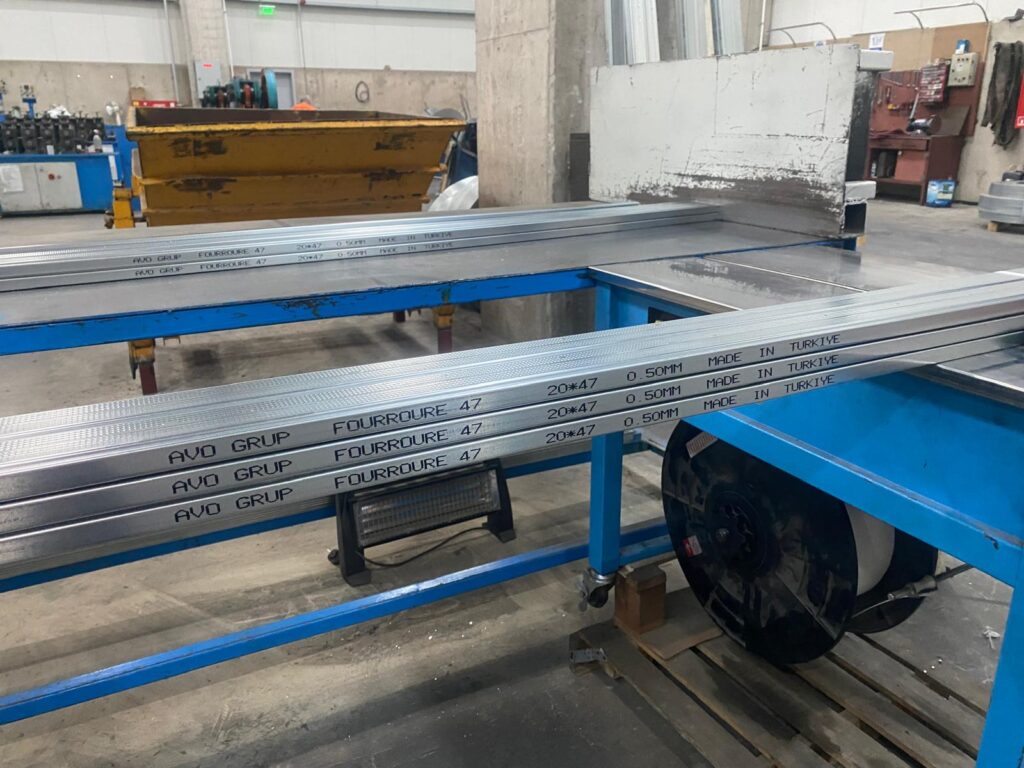
How Are Galvanized Profiles Manufactured?
Galvanized profiles are widely used across various industries, including construction, automotive, energy, agriculture, and more, due to their durability and long-lasting nature. Understanding how these profiles are manufactured is essential for appreciating their properties and making informed product choices. In this blog, we’ll delve into the detailed process of manufacturing galvanized profiles.
What Is a Galvanized Profile?
A galvanized profile is a steel or iron-based material coated with a layer of zinc to protect it from corrosion. This process ensures the material’s resistance to rust and enhances its durability. Galvanization can be done using various methods, such as hot-dip galvanizing or electro-galvanizing.
Steps in Galvanized Profile Manufacturing
The manufacturing process of galvanized profiles typically includes the following steps:
1. Selection of Raw Steel or Iron
The process begins with choosing the appropriate quality of raw steel or iron. These materials are prepared in standard forms such as sheets, rolls, or bars. The steel grade and chemical composition are determined based on the intended application.
2. Shaping the Material
The raw material is shaped into the desired profile type (e.g., U, C, L, or Z profiles). This is usually done through rolling or cutting-bending machines. During shaping, parameters such as size and thickness are adjusted to meet project requirements.
3. Cleaning and Preparation
Before galvanizing, the material’s surface must be thoroughly cleaned to ensure optimal adherence of the zinc coating. This step involves:
- Degreasing: Removing oils and dirt from the surface.
- Acid Pickling: Eliminating rust and oxide layers.
- Rinsing: Washing off any acid residues.
- Flux Coating: Applying a protective layer to enhance the bonding of zinc to the steel surface.
4. Galvanizing Process
The galvanizing process is carried out using one of the following methods:
- Hot-Dip Galvanizing: The profile is submerged in a bath of molten zinc. During this process, zinc adheres tightly to the metal surface, forming a robust protective layer.
- Electro-Galvanizing: Using an electric current, zinc is deposited onto the steel surface through an electrochemical process. This method is ideal for applications requiring a thinner zinc coating.
5. Cooling and Drying
After galvanization, the profile is rapidly cooled to solidify the zinc coating. The material is then dried and prepared for final inspections.
6. Quality Control and Packaging
The galvanized profiles undergo detailed inspections to ensure compliance with international quality standards. Parameters such as dimensional accuracy, coating thickness, and corrosion resistance are tested. Finally, the profiles are packaged appropriately for shipment.
Techniques Used in Galvanized Profile Production
Automation and Robotics
Modern manufacturing of galvanized profiles has become more efficient with the integration of automation systems and robotics, minimizing errors and increasing production speed.
Environmentally Friendly Practices
The use of recyclable zinc coatings and the reduction of chemicals in the processes contribute to making galvanized profile production an eco-friendly operation.
Benefits of Galvanized Profiles
Longevity: Their corrosion resistance ensures durability, even in outdoor conditions.
Low Maintenance: They do not require additional painting or protective coatings.
Aesthetic Appeal: Their smooth and shiny surface is visually appealing for many applications.
Industries Where Galvanized Profiles Are Used
Galvanized profiles are indispensable in industries that demand durability and corrosion resistance:
- Construction: Used in roofs, walls, and structural supports.
- Energy: Utilized in solar panel and wind turbine installations.
- Infrastructure: Essential for bridges, road barriers, and water channels.
- Agriculture: Applied in greenhouses, livestock shelters, and irrigation systems.
Conclusion
The production of galvanized profiles is a detailed process that directly impacts their durability and quality. Proper selection of raw materials, meticulous manufacturing steps, and thorough quality control make galvanized profiles a reliable choice for various projects.
If you’re looking for a durable and dependable solution for your project, galvanized profiles are an excellent option. Be sure to consult with a professional supplier to ensure the best product selection for your needs.